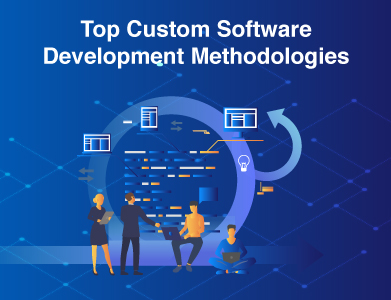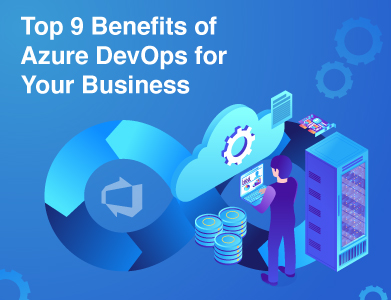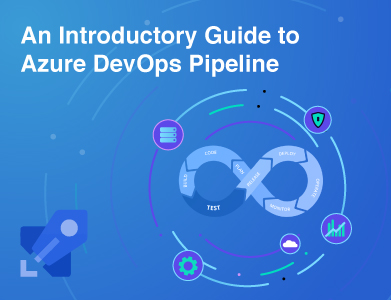Expertise
Modern business is complicated. Whether you're running a small SaaS company or managing IT for a multinational enterprise, you’ve got a lot on your plate. The digital landscape is changing faster than ever and staying competitive often feels like running on a treadmill set to full speed.
Now, here’s the problem: your existing IT infrastructure is probably stretched thin. Maybe your on-premises servers can’t handle peak demand, or your data security needs are butting heads with your scalability goals. Sound familiar? If so, you’re not alone.
This is where hybrid cloud migration comes in. It’s not just a buzzword—it’s a game-changer for businesses looking to stay agile, cut costs, and protect sensitive data. By blending the flexibility of public cloud services with the control of on-premises infrastructure, hybrid cloud solutions offer the best of both worlds.
In this guide, we’ll break down everything you need to know:
- What hybrid cloud migration is and why it’s critical.
- Practical steps to get started.
- The real-world benefits (backed by stats and examples).
- Common pitfalls and how to avoid them.
By the time you finish, you’ll have a clear roadmap to making hybrid cloud migration work for your business—and the confidence to start the journey.
What is Hybrid Cloud Migration?
Hybrid cloud migration involves moving your data, applications, and workloads between on-premises systems, private clouds, and public clouds. It’s not about replacing one system with another—it’s about creating a seamless blend of environments that work together.
For example, you might keep sensitive customer data in a private cloud to meet compliance regulations while using a public cloud for customer-facing apps. This flexibility allows businesses to scale resources on-demand while maintaining control over critical assets.
Stat Spotlight:
- 82% of IT leaders prefer hybrid cloud solutions for their flexibility and scalability. (TechRepublic)
- Over 93% of enterprises are adopting multi-cloud strategies, blending public and private resources. (Mertech)
Why Hybrid Cloud Migration is Essential
Here’s the truth: the one-size-fits-all approach to cloud computing doesn’t cut it anymore. Businesses today need tailored solutions that match their unique needs. Hybrid cloud migration provides just that.
Who Benefits Most?
- Growing Startups Need to scale without overspending on IT infrastructure.
- Established Enterprises Manage complex systems while meeting strict data security regulations.
- IT Teams Everywhere Reduce downtime, streamline operations, and focus on innovation.
Let’s dive into the steps to get started.
Steps to Seamless Hybrid Cloud Migration
Step 1: Assess Your Current Environment
Before you pack your bags for the cloud, take a good look at what you’re working with.
- Create an inventory of your apps, workloads, and data.
- Identify dependencies that could cause hiccups during migration.
- Assess cloud readiness by evaluating performance, security, and scalability needs.
Pro Tip: Conduct a cost-benefit analysis to understand what’s worth migrating and what’s better off staying on-premises.
Step 2: Define Your Goals
What do you want out of hybrid cloud migration? Maybe it’s cost savings, faster app deployment, or enhanced security. Whatever your goals, write them down. Clear objectives will guide your strategy.
Step 3: Choose the Right Strategy
Hybrid cloud migration isn’t one-size-fits-all. Here are the main strategies to consider:
- Lift and Shift (Rehosting) Move applications as-is to the cloud without changes. It’s quick but might not fully leverage cloud benefits.
- Replatforming Make minor tweaks to optimize applications for cloud environments.
- Refactoring Redesign applications for cloud-native functionality, like microservices or serverless computing.
Step 4: Secure Your Data
Data breaches are every IT team’s nightmare. During migration, your data is vulnerable.
- Encrypt everything—both in transit and at rest.
- Use tools like AWS Snowball for secure bulk data transfers.
- Set up robust access controls to limit who can see what.
Step 5: Test, Test, Test
Don’t skip testing! Run your applications in the new environment, monitor performance, and iron out bugs. It’s better to catch issues now than deal with them later.
The Payoff: Benefits of Hybrid Cloud Migration
Now, let’s talk about what you stand to gain. Spoiler alert: it’s a lot.
1. Scalability On-Demand
Imagine you’re a retailer gearing up for Black Friday. Your on-premises servers can’t handle the traffic spike—but the public cloud can. Hybrid cloud lets you scale up during peak times and scale down when things are quiet.
Stat Spotlight: Businesses using hybrid cloud report 30% lower IT costs compared to traditional systems.
2. Enhanced Security
With hybrid cloud, you don’t have to choose between scalability and security. Sensitive data stays on-premises or in private clouds, while less critical workloads run on public clouds.
3. Cost Efficiency
Stop wasting money on underutilized servers. Hybrid cloud’s pay-as-you-go model means you only pay for what you use.
Example: Workshop Software, an automotive SaaS provider, cut costs and improved customer satisfaction by adopting a hybrid cloud model.
4. Improved Agility
Hybrid cloud accelerates app development and deployment, helping businesses adapt quickly to market changes. It’s a competitive edge in today’s fast-paced world.
Common Pitfalls (and How to Avoid Them)
Challenge 1: Integration Complexities
Combining on-premises and cloud systems isn’t always smooth sailing. Data silos can crop up, making operations clunky.
Solution: Use hybrid cloud platforms like Microsoft Azure Arc to bridge the gap.
Challenge 2: Data Security Risks
Moving data between environments can expose vulnerabilities. Misconfigurations and human errors are common culprits.
Solution: Partner with cloud security experts or invest in training your team.
Challenge 3: Skills Gap
Managing hybrid environments requires specialized skills—not everyone’s up to speed.
Solution: Hire Managed Cloud Service Providers (MSPs) or upskill your IT staff with cloud certifications.
Future Trends to Watch
The hybrid cloud space isn’t standing still. Here’s what’s coming:
- AI and Machine Learning Expect smarter resource allocation and enhanced analytics.
- Edge Computing Faster processing by bringing computation closer to data sources.
- Eco-Friendly Clouds Cloud providers are prioritizing sustainability, reducing carbon footprints for businesses.
Final Thoughts
Hybrid cloud migration isn’t just a tech upgrade—it’s a business transformation. It’s about staying competitive, agile, and secure in a rapidly evolving world. Whether you’re a startup scaling up or an enterprise optimizing resources, hybrid cloud offers the flexibility you need.
Want to explore hybrid cloud migration? While we’re here to help, what matters most is that you find a solution that fits your goals. Start small, stay flexible, and embrace the journey—you won’t regret it.











